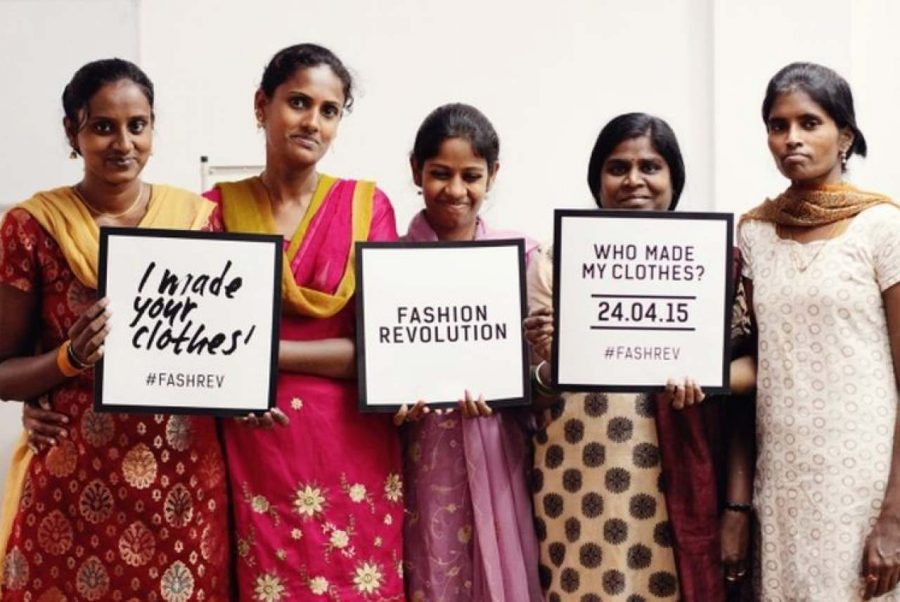The Fast Fashion Industry: Is ‘Ethical Shopping’ the Solution?
Until the 1960s, the fashion industry had four seasons: winter, spring, summer, and fall. According to The Good Trade, there are now around 52 “micro-seasons” every year. Retailers come out with new styles daily, accompanied by omnipresent marketing that convinces us that our worth is connected to our adherence to these trends. And not only has the rate of production increased, the prices of these items have decreased. So how is this a profitable business model?
The term “fast fashion” has made its way into the public conscious to describe this phenomenon. “If you take a look in your closet, chances are, most of your clothes come from fast fashion companies, such as H&M, American Eagle, Hollister, Forever 21, Urban Outfitters, Nike, Adidas, and so on. The clothes these companies sell are usually pretty low-quality, made cheaply at the expense of workers and the environment, and are built to fall apart so that there is reason for the consumer to come back and buy more,” said Allderdice junior Molly Potts.
These fast fashion brands lower production costs by manufacturing goods out of cheap materials in factories abroad. Workers are subjected to harsh conditions and paid practically nothing. According to The University of Alabama at Birmingham Institute for Human Rights, before the 1960s, 90% of clothing purchased in the United States was made here. Now, it is down to just 3%. Not having to comply with US labor laws, most garment factories have little oversight. The 2013 collapse of the Rana Plaza building (which housed garment factories) in Dhaka, Bangladesh that killed 1,129 workers made headlines and sparked public outrage. However, everyday human rights abuses typically go unnoticed.
Fast fashion also leaves a considerable ecological footprint. In addition to causing high greenhouse gas emissions, the fashion industry uses cheap materials and chemical dyes that can be harmful to both workers and consumers. As brands cycle through an increasing number of styles, more and more of our clothes end up in landfills (11 million tons in the US yearly according to Rubicon Global).
The concept of “ethical fashion” comes from the idea that there is a cost of our clothes beyond what we see on the price tag. What we don’t pay out of wallets comes at the cost of sweatshop labor and the environment. Companies like Everlane, Allbirds, Outdoor Voices, Patagonia, Kotn, and many more provide ethical and sustainable alternatives.
So what’s the catch? Shopping ethically and sustainably is simply not an option for everyone. Companies that produce clothing sustainably with fair and transparent labor policies can’t compete with the low price points of large corporations like H&M and Forever 21. Aside from price, the limited selection of ethical brands doesn’t accommodate all body types or styles. Since these companies don’t usually market towards adolescents, their products may not appeal to trend-conscious teenagers. In a culture that equates brand names with status, it can be difficult to turn a blind eye to trends. Additionally, the majority of ethical retailers do business online, which may deter some customers.
But before dismissing the idea, there are a couple of things to consider. The logic behind ethical and sustainable shopping is that consumers exercise power by boycotting some brands and supporting others. “Voting with your dollar,” as they say. It’s a simple economic principle: if consumers with the means to do so buy from businesses with ethical and sustainable practices, the demand for their products will increase and thus the prices will decrease.
It’s easy to get attracted by the low price tags of fast fashion items, but it is also important to consider the quality of the clothes you are buying. Will you be saving in the long run if your clothes fall apart in a couple of months? Companies like Patagonia champion the idea of buying a small amount of high quality clothing and mending pieces if they fall apart.
For shoppers on a budget, thrift/vintage stores are a great way to purchase cheap clothing with little environmental impact. Pittsburgh offers a great range of options from Goodwill in multiple locations to Avalon in Squirrel Hill and Buffalo Exchange on the South Side that will accommodate different preferences without breaking the bank.
Still can’t imagine abandoning your favorite brands? That’s okay; conscious shopping doesn’t have to be all-or-nothing. Making an effort to reduce purchases and shop at second-hand/ethical companies doesn’t mean you can’t buy the occasional piece from a fast fashion brand. As Potts concluded, “Whether it be the high prices, smaller selections, or having to order clothes online, it is not a particularly convenient way to shop and can feel restrictive at times. It is nevertheless important to be aware that someone or something always pays the cost of our convenience. And I would like to see those who do have the means make efforts to shop more consciously, for the good of humanity and the Earth.”
In addition to concerns about the elitism and inaccessibility of ethical options, critics raise legitimate questions about the effectiveness of ethical and sustainable shopping. Is it just a way to ease our consciences as while we engage in other behaviors that are harmful to the planet and/or workers? And is the focus on conscious consumerism a distraction from other solutions to climate change and unethical labor practices, namely policy change? There are no simple answers.
While conscious shopping may be a step above plastic straw boycotts, legislative action is required to address root issues that enable the fast fashion industry. Luckily, the two aren’t mutually exclusive; it’s possible to vote with your dollar and your actual constitutional right.



